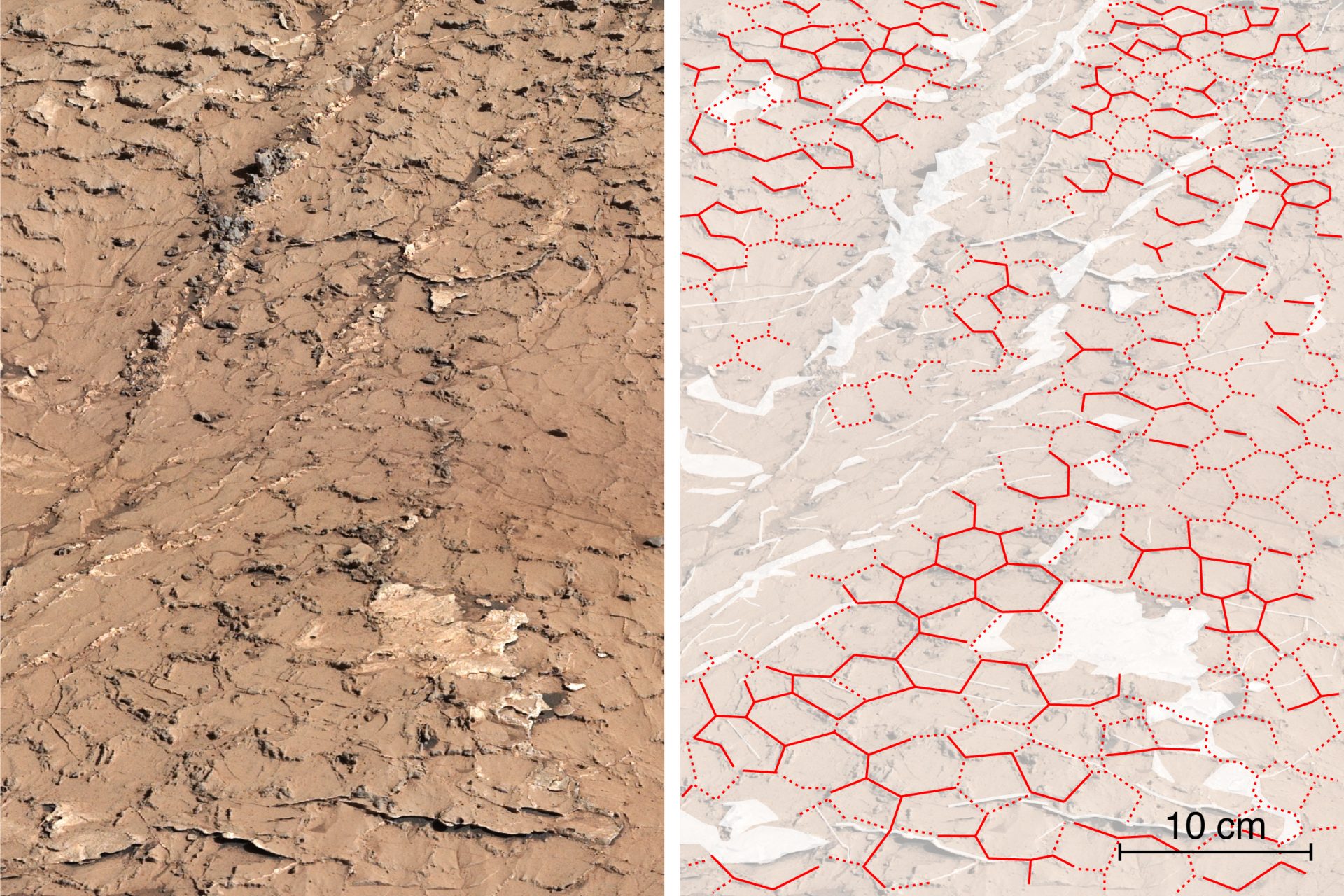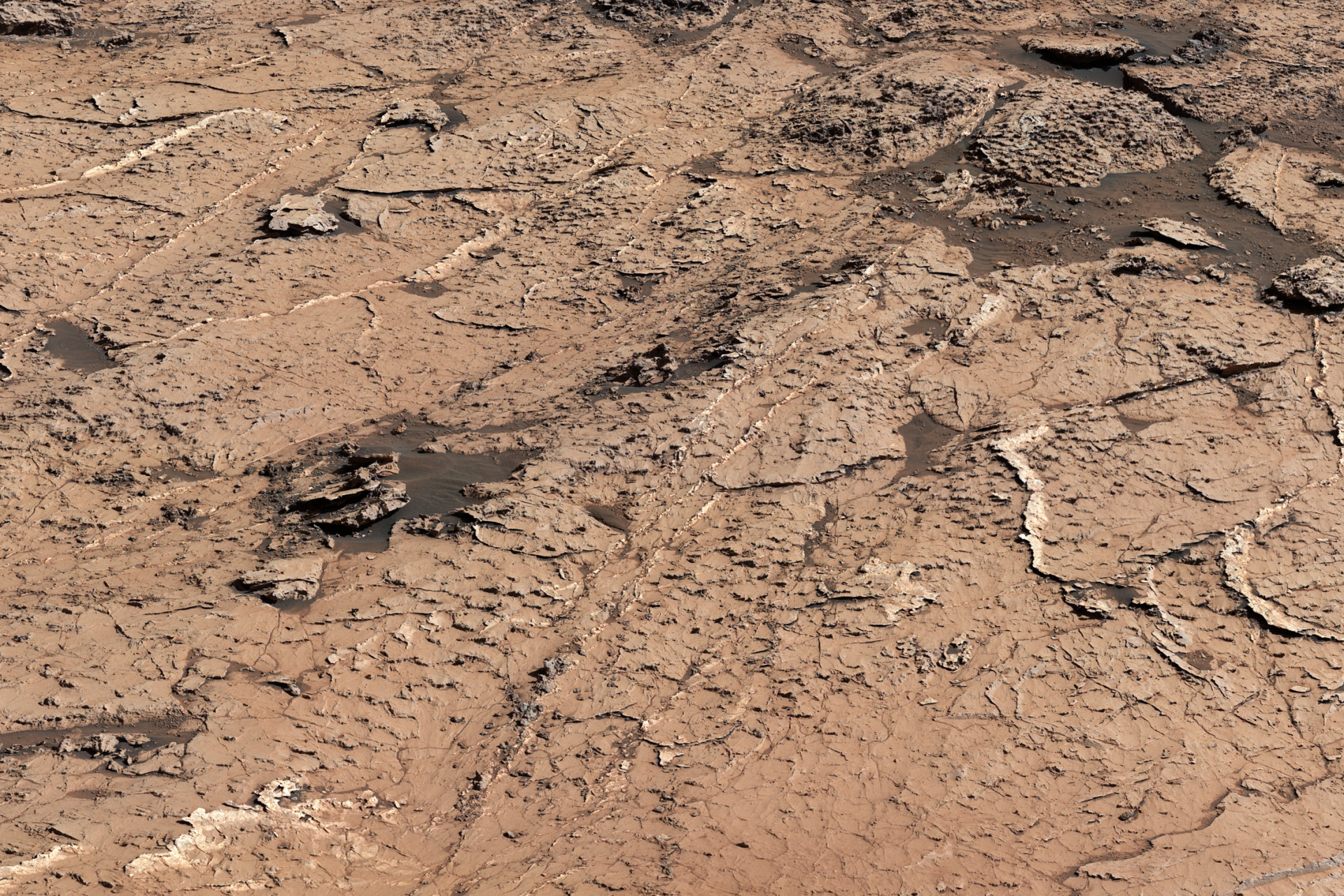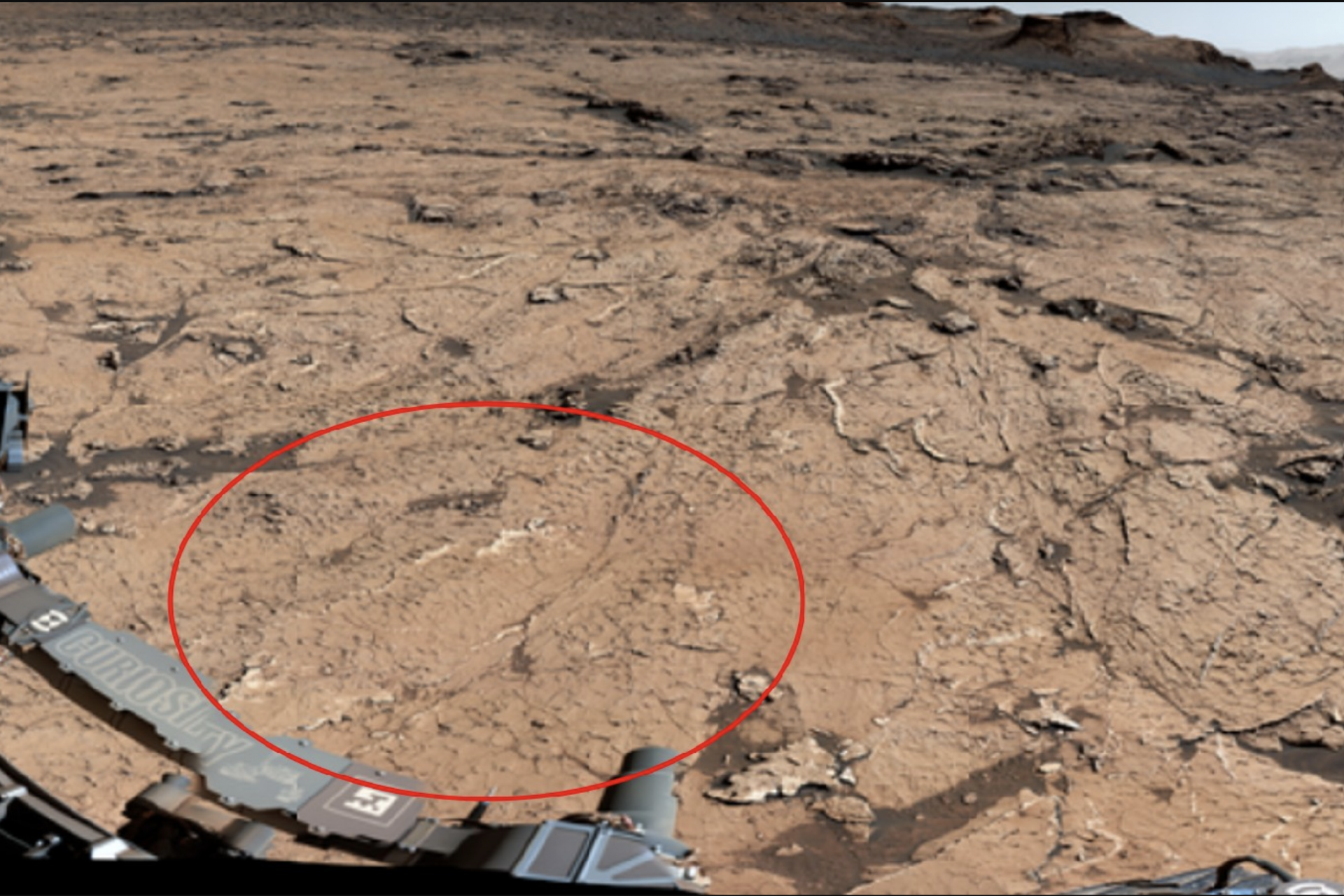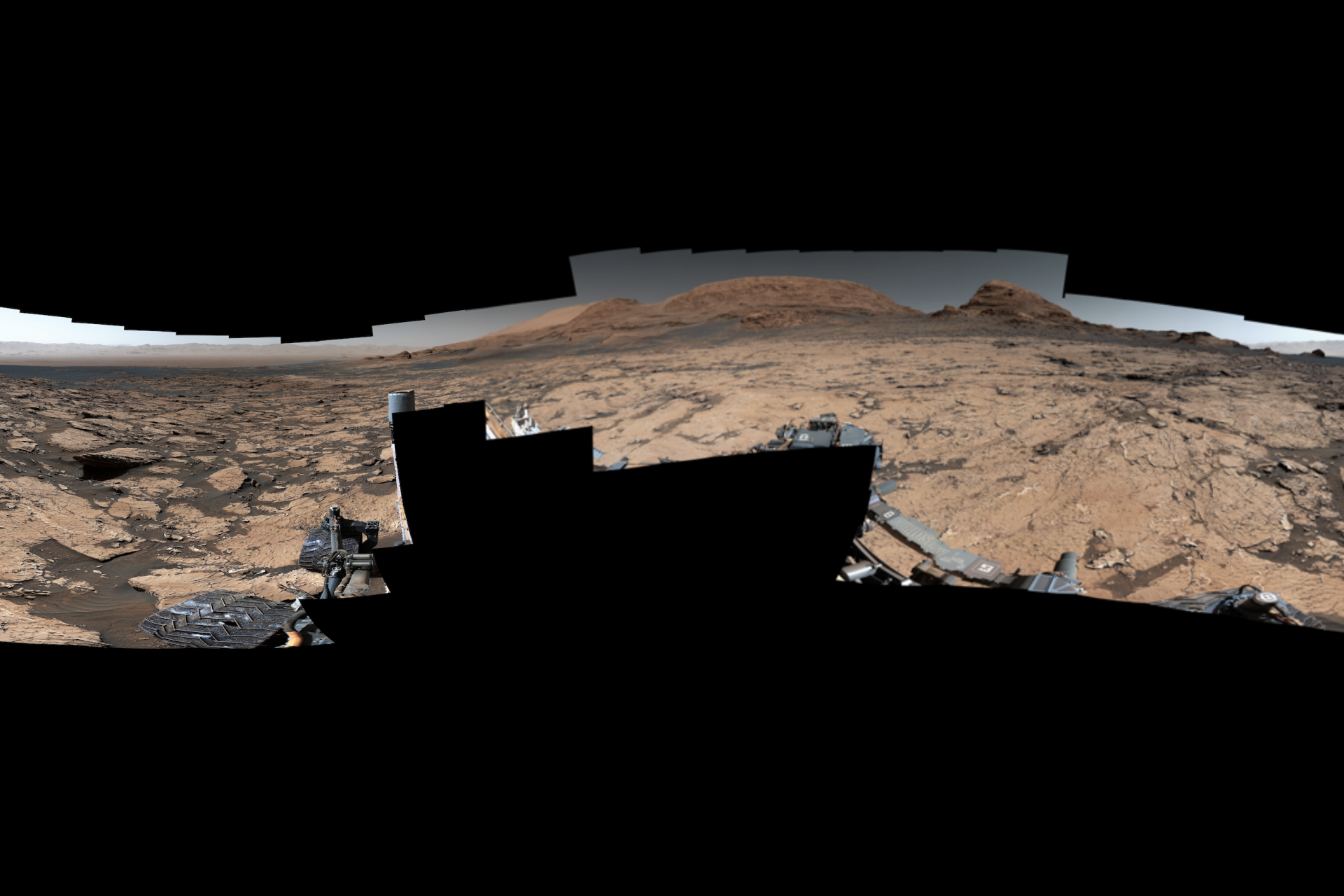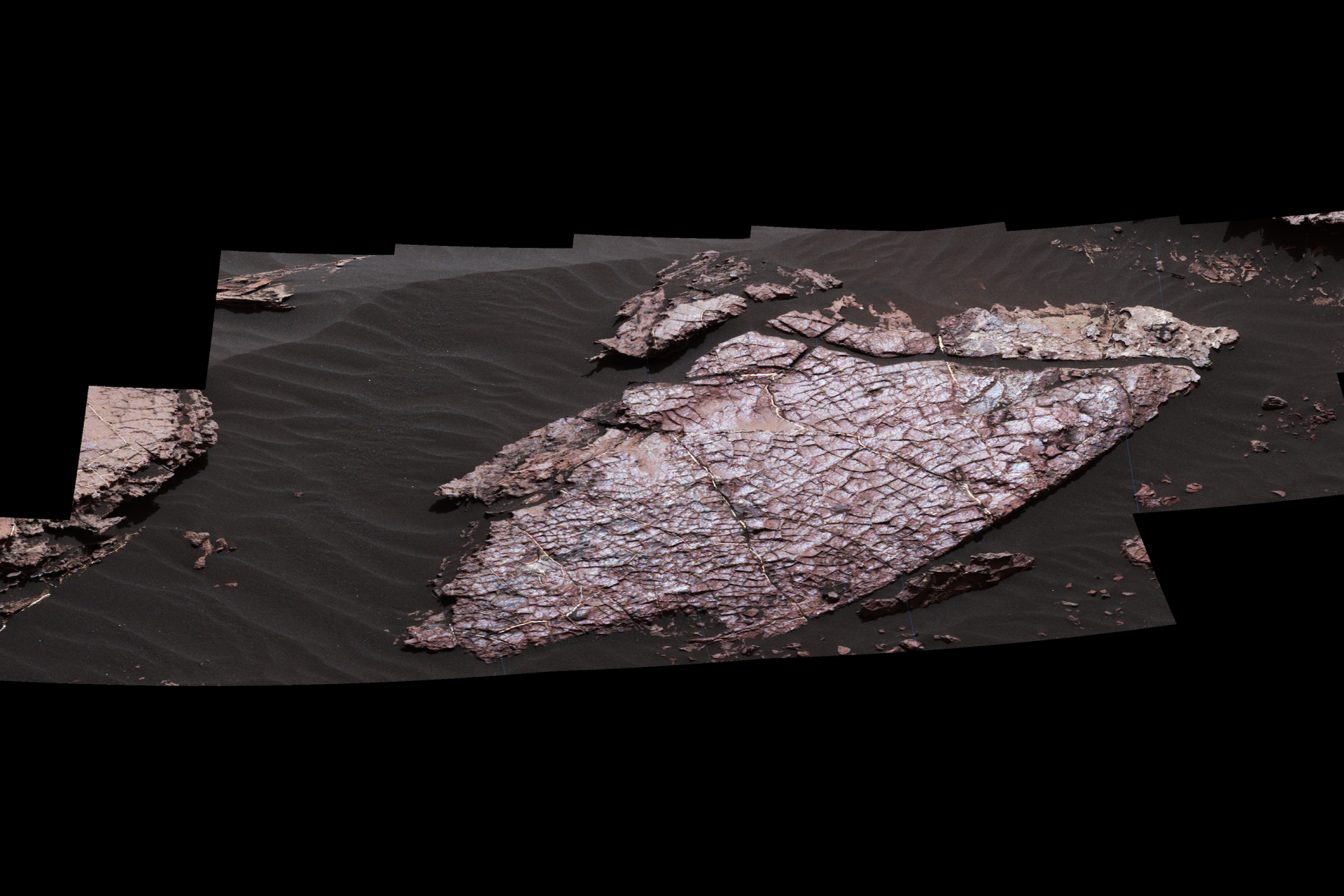Photo Credit: NASA/JPL-Caltech/MSSS/IRAP
Ancient mud on Mars may be the key to proving it was once teeming with life
Does life exist anywhere else in the universe? This is one of the great unanswered questions of modern life but a study about weird-looking mud published in 2023 may have finally given us an answer.
Ancient mud formations discovered on Mars could be a sign that the Red Planet was once teaming with life. More importantly, the mud might be the proof needed to definitively say life has existed somewhere other than our planet.
The research was published in the Journal Nature in August 2023 and revealed that a grouping of hexagon-tiled rocks might mean Mars once underwent repeating cycles of wet and dry spells that occurred over millions of years.
Photo Credit: NASA/JPL-Caltech/MSSS/IRAP
The reason this finding is important is because it demonstrates that the Red Planet once harbored the perfect conditions for the emergence of life according to the researchers.
Photo Credit: NASA/JPL-Caltech/MSSS/IRAP
Previous research has delved deep into the perennially wet surface of Mars but nothing has been found proving that the Red Planet’s early environment had a wet-dry cycle.
The authors of the study wrote that the shape of the mud indicated that it was formed in a way that couldn't be explained by volcanic activity or asteroid impacts on the planet.
“Our findings point to a sustained, cyclic, possibly seasonal, climate on early Mars,” the study’s authors wrote, adding that this cycle might have been able to “sustain an Earth-like climate.”
The pictures were taken by NASA’s Curiosity Rover back in 2021 while it was exploring the slopes of Mount Sharp but the interpretation of the images was only published in 2o23.
When the researchers revealed their conclusion in Nature, it took the international community by storm since it was the best evidence we have had so far that shows life on Mars could have really existed in the planet's past.
"This is the first tangible evidence we've seen that the ancient climate of Mars had such regular, Earth-like wet-dry cycles," study lead author William Rapin explained to Space.com.
Photo Credit: Twitter @WilliamRapin
Rapin, a planetary scientist at France’s National Center for Scientific Research at the time the research was published, explained why the discovery of a wet and dry cycle on the Red Planet was so important.
Photo Credit: NASA/JPL-Caltech/MSSS
It all boils down to repeated wet and dry cycles being helpful and possibly even required for what the planetary scientist said was “the molecular evolution that could lead to life.”
Rapin went on to say that scientists on Earth have run experiments showing that when a rock is subjected to wet and dry spells, it can lead to the formation of simple molecules.
"We now have for the first time vestiges of times that could have been conducive to the origin of life," Rapin continued, adding the original discovery of the rocks was exciting.
“It was an unexpected type of rock, something we hadn't seen on Mars before," Rapin explained. "This formation had some depth, which tells us this cycling was sustained for a prolonged period, up to millions of years.”
Photo Credit: NASA/JPL-Caltech/MSSS
Scientists originally thought the clay formations were created by a dried-up ancient lake bed according to a NASA press release of the images from all the way back in 2017.
The team analyzing the images at the time believed they formed roughly 3 billion years ago and were still around because the formations were covered by other rock sediment. There’s still much to be learned but it is an amazing new discovery!
More for you
Top Stories





